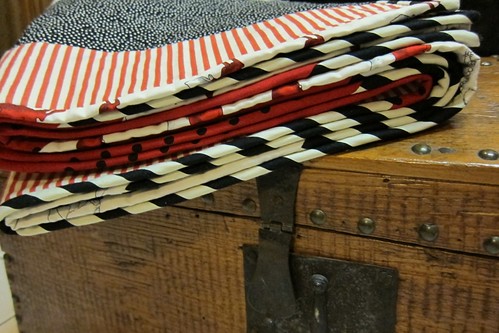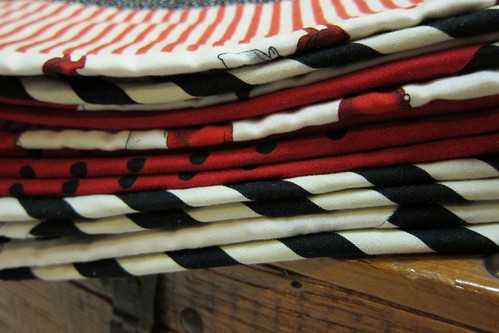
Although I'm not into having a lot of tools, I found one I couldn't refuse. My theory is, if I can do the same thing with tools I already have, I don't want another one. But I made an exception for this one because it really speeds up the binding process.

I learned about it while watching this tutorial from Missouri Star Quilt Company.
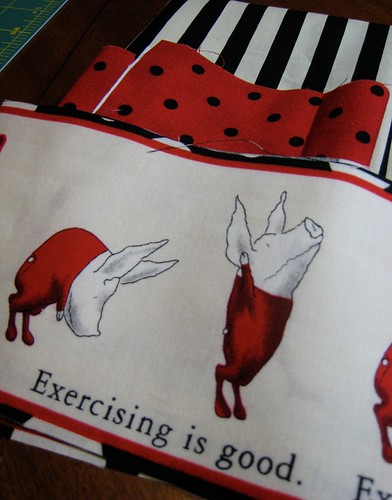
1/2 yard of 1 fabric will make enough binding for a twin size quilt, or you can make a scrappy binding using your "left-overs".
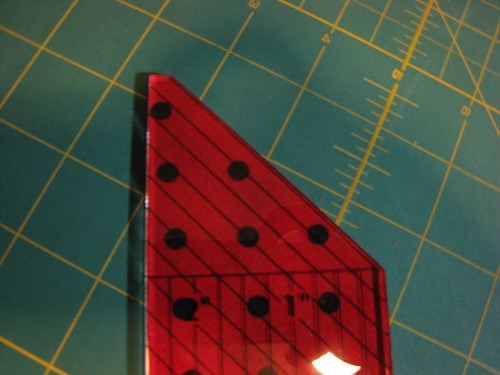
Cut your fabric according to the instructions. Ideally, the ruler is made to cut 2 1/2 in. strips. I prefer a 2 1/4 inch strip for my bindings if I'm using regular cotton batting. If I'm using bamboo batting, I go down to a 2 inch strip. It is fairly easy to make that adjustment with this ruler.
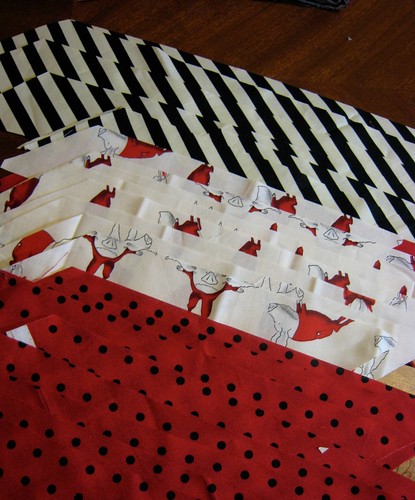
I love a scrappy binding, although this one isn't totally scrappy, there is some order to it. After you've cut your strips according to the ruler, the strips sew together very easy.
